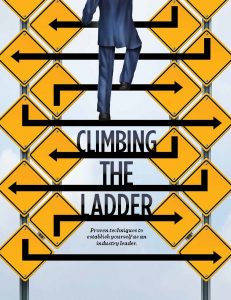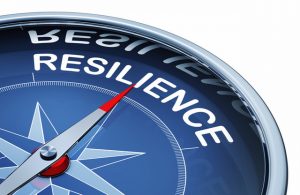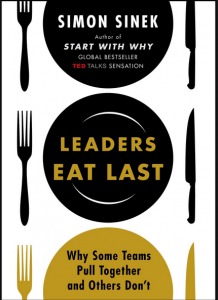Proven techniques to establish yourself as an industry leader.
By Perry Eggleston, CAPP, DPH
THERE IS NO SHORTAGE OF DEFINITIONS OR  PROCESSES for professionals to become leaders. All industries, including parking and mobility, attempt to incorporate some form of leadership requirement into their programs. Dictionary.com defines leadership simply as “the action of leading a group of people or an organization.” However, this definition does not define what the specific actions are in leadership. The question is: Which leadership actions must one use? “Leadership” is simply an accumulation of specific social/management skills applied at the proper time to motivate those who are led.
PROCESSES for professionals to become leaders. All industries, including parking and mobility, attempt to incorporate some form of leadership requirement into their programs. Dictionary.com defines leadership simply as “the action of leading a group of people or an organization.” However, this definition does not define what the specific actions are in leadership. The question is: Which leadership actions must one use? “Leadership” is simply an accumulation of specific social/management skills applied at the proper time to motivate those who are led.
Law enforcement is one industry that created formalized leadership training for its employees. In California, the Sherman Block Supervisory Leadership Institute is a program in which law enforcement sergeants complete a curriculum of study, reading, and reports on various leadership styles and theories. They take part three days a month for nine months.
Warren G. Bennis, a pioneer in the field of leadership studies, said, “Leaders are people who do the right thing; managers are people who do things right.”
Management is easier to define. Merriam-Webster Online Dictionary defines management or manage as “to act or direct with a degree of skill.” It seems leadership and management are synonymous. Both definitions require the development of skills, and those skills are teachable. However, effective leadership uses timing and application of management to motivate employees, unlike management, which relies solely on authority for motivation.
Eight Competencies for Leaders
In their book, “Leadership for the Common Good: Tackling Public Problems in a Shared Power World,” authors Barbara C. Crosby and John M. Bryson present eight competencies for effective leadership. Because the parking and mobility industry affects the quality of life for their communities, most mobility administrators are expected to use all eight competencies at some point during their careers.
While all the competencies are important, their differences are slight, and as a group, they will almost appear equal. However, when looking closely, the differences are logical and easily ranked in importance:
- Personal Leadership: understanding and deploying personal assets on behalf of beneficial change.
- Organizational Leadership: nurturing humane and effective organizations.
- Leadership in Context: understanding the social, political, economic, and technological givens as well as potentialities.
- Visionary Leadership: creating and communicating shared meaning in forums.
- Ethical Leadership: sanctioning conduct and adjudicating disputes in court.
- Team Leadership: building effective workgroups.
- Policy Entrepreneur: coordinating leadership tasks over the course of a policy change cycle.
- Political Leadership: making and implementing decisions in legislative, executive, and administrative arenas.
Foundational to the first seven competencies is personal leadership. This is further defined as a leader’s passion in sharpening the competencies not for personal gain, but for the betterment of the organization. Personal leadership is who we are as leaders. These are internal morality and ethics that are ingrained while growing up by social and environment factors.
Steps to Leadership
Once emerging leaders have defined how they want to be known, they can focus on organizational leadership and leadership in context. As an emerging leader, it is important to nurture an effective organization by determining the skill sets of the team and to understand how external forces affect the organization. The emerging leader will better use the remaining competencies by understanding how the internal and external players affect the organization.
The policy entrepreneur and political leadership competencies are external to the organization and those over which the new leader has the least control. However, mastery of these two are important to the well-being of the organization, which can affect the morale of the employees. When there are policy direction changes coming from a new campus president (or other administrators), new mayor (and/or city council), or a new board of directors, the previous organizational goals are threatened. How the policy entrepreneur and political leader navigate these new forces will affect their status as a leader, both internally and externally to the organization.
Research
Up to this point, the discussion has focused on general leadership competencies to better understand how organizational leadership is seen in differing contexts. However, contemporary non-academic articles provide some of the best suggestions to specific leader actions that are useful for the parking and mobility professional. The majority of the literature can be broken into three general topics:
- Communicate. Be a master communicator. As Stephen Covey wrote in “The 7 Habits of Highly Effective People,” “seek first to understand, then to be understood.” Most people listen so they can prepare for a response instead of listening to understand the message. This takes being quiet and listening, rather than speaking. It takes humbling oneself by taking the time to understand the message, rather than forcing a message. Praise in public, counsel in private, but remember to take personal responsibility when things go wrong. Don’t blame others!
- Teach instead of direct. Leadership is not knowing everything. That is why teams are created—so each member can bring a particular skill to the team. Teaching others your skills allows you to become a teacher instead of just a boss. Included in teaching is challenging yourself and your team to achieve sustained results. Remember, it is influence, and not authority that makes a great leader. Teach to gain respect, and be willing to learn from others. Ray Kroc, founder of McDonald’s, said, “When you’re green, you are growing. When you’re ripe, you rot.” Especially in the parking and mobility industry and its your integrity. Integrity keeps your message authentic.ever-changing technologies, be willing to keep learning or your effectiveness as a leader will rot.
- Be passionate and humble. Be passionate about your employees, care for your organization’s mission, and encourage your staff to accomplish impossible tasks. Be inspirational by showing empathy and maintaining your integrity. Integrity keeps your message authentic. A true leader parks his or her ego at the door and aspires to be respected as a person instead of demanding respect due to title or position. Lead by example, but let others shine. Leaders are only as successful as those they lead. Your credit comes when the team shines, so give them the most shares of the credit. Leadership is not about you; it is about those you are serving.
Using the Skills
Leadership skills are learnable, but like any soft skill, they are acquired by repetition and education. They will dull without consistent use. While some are born leaders, most of us must make positive efforts to learn leadership and practice them daily. Many job descriptions, especially for supervisory and management positions, expect some level of leadership competency. However, these same industries do not provide leadership training. The expectation is that employees must obtain leadership training from outside the organization via university courses or other channels.
Parking and mobility industry professionals have access to formal and informal leadership training opportunities. The CAPP program through IPMI includes a section on leadership while other leadership training opportunities are available through the regional parking and transportation organizations. A method of self-study is also available. There are numerous authors: Stephen Covey, Peter Drucker, and Warren Bennis are great places to start. Be curious! The best leaders are always seeking new and better ways to lead, and our industry is changing too fast to stop.
Read the article here.
PERRY EGGLESTON, CAPP, DPA, is director, SP+ University Services. He can be reached at peggleston@spplus.com.
PARKING & MOBILITY / JUNE 2019 / PARKING-MOBILITY.ORG


 By Jay Manno
By Jay Manno By Shawn Conrad, CAE
By Shawn Conrad, CAE By Perry Eggleston, CAPP, DPA
By Perry Eggleston, CAPP, DPA
 By Casey Jones, CAPP
By Casey Jones, CAPP By Tiffany Smith
By Tiffany Smith By Casey Jones, CAPP
By Casey Jones, CAPP “First rule of leadership: Everything is your fault.” -A Bug’s Life.
“First rule of leadership: Everything is your fault.” -A Bug’s Life. By Rita Pagan
By Rita Pagan